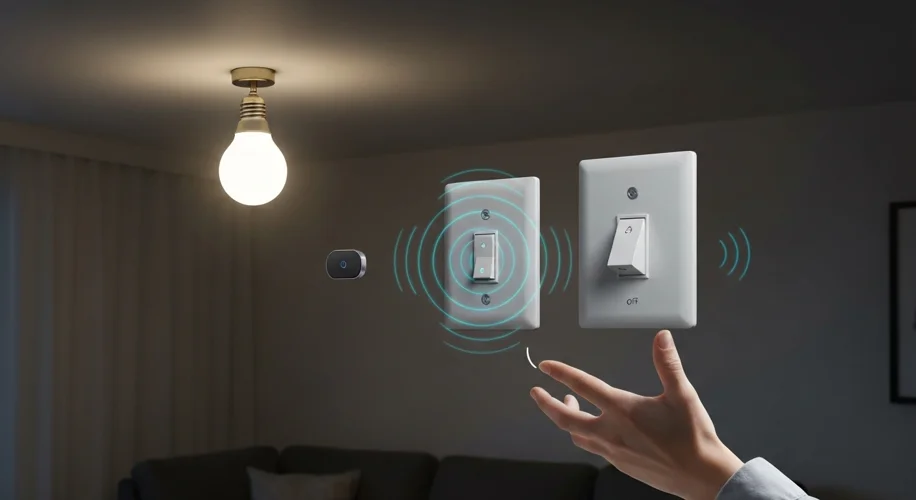You know that feeling? You just installed a bunch of smart bulbs – maybe Philips Hue or something similar – and they work great with your phone or voice assistant. But then, someone in the house flips the actual, old-fashioned light switch off. Poof! Your smart bulb is now offline and useless until the switch is flipped back on. It’s a common frustration, and one I’ve definitely bumped into.
It’s like having a super-smart watering system for your garden, but then someone unplugs the main timer. You want the convenience of smart lighting, but your existing switches are, well, a bit traditional. So, how do we bridge that gap?
The Challenge: The Unassuming Light Switch
Traditional light switches are simple: they’re either on or off. They break the circuit. Smart bulbs, on the other hand, need constant power to stay connected to your network and respond to commands. When a dumb switch cuts the power, the smart bulb is effectively “dead” until the switch is turned back on. This can be annoying if you’re used to controlling everything remotely or with your voice.
Solutions for Smarter Lighting Control
Thankfully, there are a few ways to tackle this, each with its own pros and cons. It’s all about finding what works best for your home and your setup.
- Smart Switches:
These are probably the most straightforward solution. You replace your existing dumb switch with a smart switch. These switches communicate with your smart bulbs (or sometimes directly control the lights). The advantage is that the switch itself is smart, so even if someone flips it off and on, it can usually re-establish the connection quickly.- Pros: Looks like a traditional switch, often integrates well with existing smart home ecosystems.
- Cons: Requires electrical work (though usually straightforward if you’re comfortable), and you need to make sure the smart switch is compatible with your smart bulbs.
- In-Wall Modules/Relays:
These are small devices you can wire behind your existing switch or even inside the light fixture box. They act as the “smart” component, allowing your traditional switch to still function but also giving you smart control. Some are designed to work with your existing switch, while others might require you to bypass the switch entirely, leaving it only for show (which can be confusing).- Pros: Keeps your existing aesthetic, can be hidden away.
- Cons: Wiring can be more complex, and finding the right module for your specific setup is crucial. Like smart switches, requires electrical knowledge.
- The ‘Don’t Touch the Switch’ Rule (and How to Enforce It):
This isn’t a product, but a strategy. The easiest way to keep smart bulbs online is to simply not use the physical switch. You can even get decorative covers that block the switch or labels reminding people to leave it on. This works best if everyone in the household is on board.- Pros: No wiring, no cost.
- Cons: Relies heavily on user behavior, which can be unreliable. Can be inconvenient if you really need to cut power quickly.
Considering Your Wiring: The Neutral Wire Issue
Here’s a common hurdle, especially in older homes: the neutral wire. Many smart switches and some in-wall modules require a neutral wire to function. If your existing wiring doesn’t have one at the switch box (which is common in some regions or older constructions), you’ll need to look for “no-neutral” smart switches or modules, or consider alternative solutions.
- Battery-Powered Smart Buttons: These are small, wireless buttons you can stick anywhere. They can be programmed to control your smart bulbs (turn on/off, dim). They don’t require any wiring, and you don’t have to worry about the main light switch. The trade-off is the battery needs occasional replacement.
- Pros: No wiring needed, flexible placement, affordable.
- Cons: Requires battery changes, might not look as integrated as a wall switch.
- Hardwired Solutions (Smart Switches/Modules): These offer a more permanent and seamless solution but require that neutral wire. If you have it, they’re often the most reliable option.
Making the Choice
Integrating smart bulbs with traditional switches is all about finding a balance between convenience, aesthetics, and your home’s wiring. For a clean look and reliable control, a smart switch is often the best bet if you have the neutral wire and are comfortable with basic wiring. If not, battery-powered smart buttons are a fantastic, low-hassle alternative. Whatever you choose, you can enjoy the benefits of smart lighting without losing the basic functionality of your home.
It’s a bit like choosing the right companion plant for your tomatoes – the right tech integration makes everything work better together!

